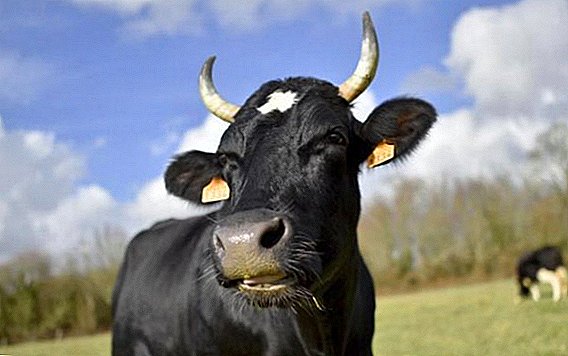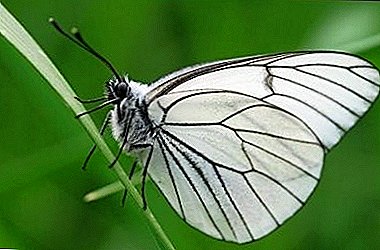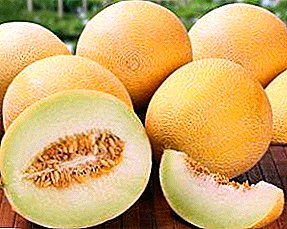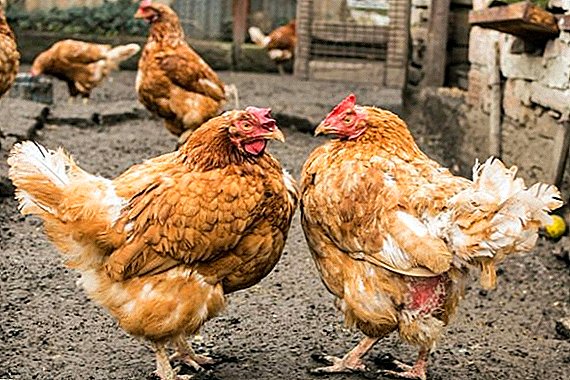 Sometimes poultry farmers and farmers note aggressive behavior among the hens, in which the birds peck at each other to bald patches on the body, bleeding wounds, or even nibble to death. This phenomenon is called pterophagia and is a deviation in behavior caused by various stress factors.
Sometimes poultry farmers and farmers note aggressive behavior among the hens, in which the birds peck at each other to bald patches on the body, bleeding wounds, or even nibble to death. This phenomenon is called pterophagia and is a deviation in behavior caused by various stress factors.
There are many reasons for aggression among birds, ranging from errors in nutrition to lighting and humidity in the hen house. Most of the reasons can be corrected and eliminated chicken fights. Let's see what can cause aggression among chickens and how to be in a similar situation.
The reasons
There may be a lot of prerequisites for the occurrence of biting, most of which are caused by mistakes in maintenance and care, which provoke stress in birds. However, there are other factors, for example, the incompatibility of the rocks or the characteristics of the temperament of the birds. Pterophagy develops not only in chickens, but also in other domestic species of birds: pheasants, quails, turkeys.

Important! Pterophagia can cause development in chickens. cannibalismwhich can turn into a steady habit.
- Excessively bright light. Often the cause of aggressive behavior of birds become too bright lighting and a longer day length. These factors cause a feeling of fear in birds, their vision is limited, and an attack on their relatives can begin.
- A variety of breeds. Sometimes due to inexperience or ignorance, novice farmers may contain incompatible breeds of chickens in the same area. It is known that some species of birds have a calmer nature, while others have a temperament rather hot-tempered and scandalous (especially in males). Before mixing different species on the same territory, it is necessary to study the nature of these chickens and the possibility of joint keeping. There is also a "discrimination" on the basis of color, when chickens with light feathers attack birds with a dark color, and vice versa.
- Not enough space. This is another common cause of bird raking. Very acute shortage of space is felt in the winter months, when chickens are forced to spend more time in the house, walking is reduced or temporarily stopped. Lack of space may also occur outside the chicken coop: if there are not enough drinking troughs and feeders, birds can also attack each other in an attempt to get to food. Very bad behavior and health of chickens affects a long absence of walking, especially in active and curious breeds. Also, a shortage of space can occur in laying hens with an insufficient number of nests, when birds literally trample each other on their heads.
 High density content is one of the causes of pterophagia
High density content is one of the causes of pterophagia - Insufficient humidity and ventilation. When building a chicken coop, it is important to think about such parameters as humidity, ventilation and maintaining the optimum temperature. Excessive humidity, high temperature, staleness and dustiness of the room can also cause aggression of birds.
- Individual feature. Sometimes experts say that pterophagy can be a congenital feature of the chick, not associated with any stress factors. Appearing at a young age, the tendency of the chicken to exacerbate continues to progress and remains for life. It is also worth bearing in mind that in some breeds pterophagy is more likely to manifest when crowded in content (for example, in the Carpathian greengrass).
- Not enough nutrients. The lack of protein and calcium can induce the bird to aggressive behavior, especially during the period of molting and egg-laying, when the consumption of these nutrients is especially high. This also includes an insufficient number of feeders and drinkers.
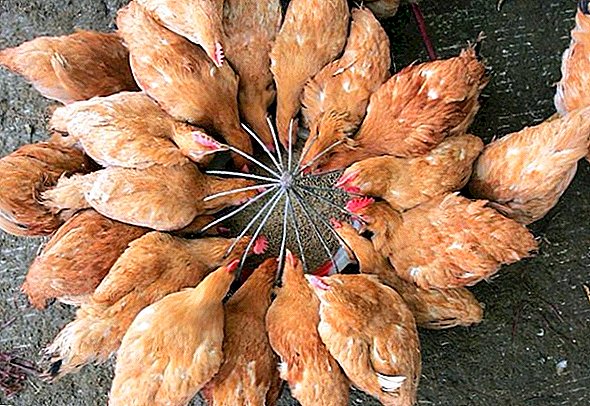 Balanced diet - the basis of the health of chickens
Balanced diet - the basis of the health of chickens - Stressful situation and unfavorable situation. In principle, strong lighting and poor nutrition, along with the lack of space, provoke stress in birds. That is, in fact, any inaccuracies in the content naturally reflect on the health and behavior of the bird. Stress can also occur when ineptly planting young stock to old chickens, when catching or vaccinating, when trimming wings or abruptly changing habitat. Any difference in the usual way of content can be a stress factor for the chicken. By the way, among the birds in the house you can observe this hazing and hierarchy, when more adult individuals are especially aggressive towards the youngsters.
- The presence of external parasites. In the presence of bedbugs, fleas or lice, the feathery seeks to get rid of them with a beak. However, as a result of such actions, bleeding cracks and wounds may remain on the body. Such a picture can be a catalyst for aggressive behavior among livestock.
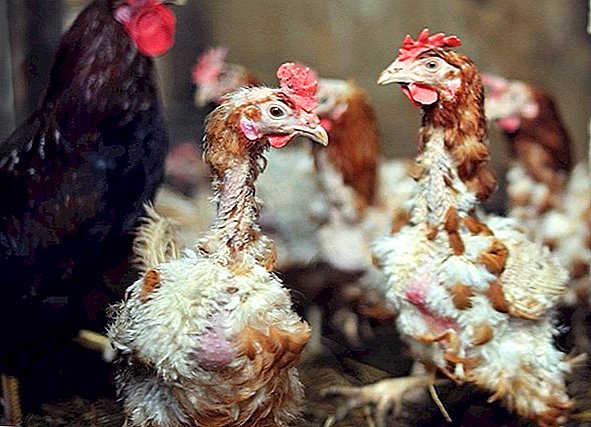
Important! Worst of all, when seeing and eating blood, the aggression of the attacking side only intensifies and at the same time can spread to many individuals. Then the victim is attacked by the rest of the livestock. If time does not isolate the bird, subjected to pecking, very soon it will peck to death.
It should be understood that the fact of snapping and even cannibalism suggests that the birds have worked defensive reflex as a response to poor content or stress. This is a vivid example of the fact that "the strongest survives."
Under adverse conditions, natural selection among the birds literally begins. Only in rare cases, chafing is an individual congenital feature of the chick, since in most situations there is a definite reason for such behavior.
Find out what may be the causes of baldness chickens.
Signs at rasklevy
The clinical picture of pecking will depend on such factors:
- the degree of neglect of the situation;
- freshness injured;
- places of defeat.
 The wound on the back of a chicken because of a bite
The wound on the back of a chicken because of a bite
General signs of raskleva:
- blood marks on various parts of the body: head, neck, crest, cloaca, eyes, stomach, etc .;
- traces of blood on the beaks of attacking hens;
- bald spots;
- injuries and lacerations;
- weight loss of birds subjected to aggression;
- a sharp decrease in egg production in injured birds.
Did you know? One of the most expensive breeds of chickens is Ayam Chemani. - one individual of this species costs about $200. The reason for such high prices is the special color of the bird: the hens and roosters of this breed are completely black, even the scallops, internal organs, meat and bones. Unusual pigmentation is caused by the dominant gene.
What to do
First of all, when such an aggression is found among the livestock, it is necessary to isolate all weak and injured individuals that have been attacked. Next, you need to review the conditions of detention and make adjustments.

Remember that the elimination of conflict individuals may be ineffective if you do not understand and do not remove the true cause of this behavior.
Find out what are the signs and treatment of diarrhea, coccidiosis, pasteurellosis, lice, perioeda, worms in chickens.
- First, it is necessary to identify errors in nutrition: introduce mineral supplements, animal products, grass and vegetables, adjust the frequency of feeding. It is advisable to consult with a specialist to correctly create a complete and balanced diet. Check if there is enough space for everyone to feed.
- It is important to establish a microclimate and lighting in the house: eliminate drafts, regularly carry out airing, cleaning litter, install ventilation. It is important to keep air humidity and light levels under control. Normally, the length of daylight should be no more than 12-14 hours. It is impossible to choose too bright light bulbs for a chicken coop; a 40 W light bulb in a 3–4 square meter house will be enough. m. The intensity of illumination should be in the range of 10-15 lux.
- With a lack of space in the house will have to expand it. or build another one for the normal placement of birds. The same applies to the construction of additional nests for laying eggs. When building a house, its perimeter should be calculated as follows: for 1 square meter. m. there should be a maximum of 10 birds. Kuram necessarily need territory for walking.
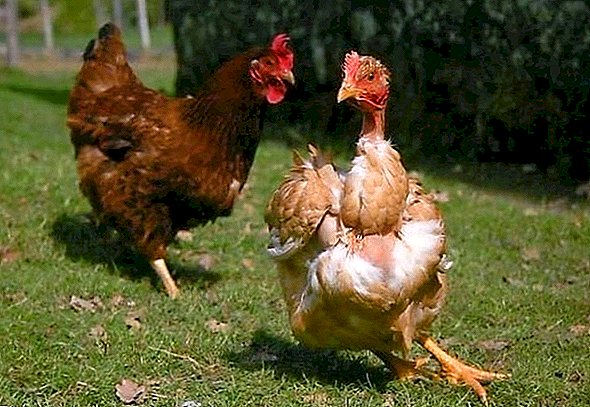
- On one courtyard for walking can not contain more than 30 goals. In this case, the site should be zoned and fenced, as among the birds formed groups that may conflict.
- During the heat it is important to arrange swimming for adults. To do this, you can use a hose with a spray and warm water. You can also organize the feathered "baths" of ash and river sand.
- It is important to calculate and catch the most conflicting ringleader birds. Such individuals are rejected for meat.
- Debicking procedure is considered effective. - i.e. beak cut. Held in chickens at the age of 1, 6, 10 or 30 days. However, this procedure is very painful, inhuman and unethical, therefore it is criticized.
 There is an interesting way to deal with chipping - special glasses (blinders)
There is an interesting way to deal with chipping - special glasses (blinders) - It is important to respect the ratio of roosters and hens: 10 females should be no more than 1 male.
- It is important to monitor the behavior of chicks. and in time to reject conflict individuals.
- During the molting period, special attention should be paid to the bird, after all, the bald patches, which at first can be taken as a normal phenomenon, may in fact testify to the aggression of their relatives.
Did you know? To many, chickens seem to be primitive and low-intellectual creatures. WITHKorea of allThe premise for such a stereotype is the idea that intelligence directly depends on the size of the skull. In fact, chickens have a fairly developed intelligence: they can remember more than a hundred people, determine the owner, as well as the territory and their relatives. Scientists confirm that the skill set for a one-day chicken corresponds to a 3-year-old human cub!
How to avoid raskleva chickens: video
Treatment of affected birds
Isolated injured individuals need assistance. The edges of the injured areas must be treated with an antiseptic - it may be tincture of iodine with glycerin, a solution of brilliant green manganese, an ointment (ichthyol or synthomycin). Also, good results are obtained by the treatment of lesions with the drug ASD-2 - in addition to the antiseptic effect, it also discourages other individuals with their smell. This simple therapeutic measures are over.
Learn how to build a chicken coop, ventilation in it, drinkers and feeders, nests with your own hands.
It is important to understand that pecking does not occur by itself and always has a root cause. If you do not find and eliminate it, you can lose a significant part of their livestock. Carefully and responsibly create the conditions for the maintenance of birds, show maximum care for the bird - and then its behavior, well-being and, as a result, productivity will always please you.
 Treatment of wounds in injured birds
Treatment of wounds in injured birds
What effectively from raskleva: reviews

I fed it up to the catch and dosed it, the bird started to get nervous, then put the food in plenty, calmed down, I calmed down ...
I understood one thing, a hen, you cannot overfeed with grain ...

Only one way out, you buy a special spray from slander, it is smelly and antiseptic, chickens do not tolerate this smell, and sprinkle the damaged areas.



 High density content is one of the causes of pterophagia
High density content is one of the causes of pterophagia Balanced diet - the basis of the health of chickens
Balanced diet - the basis of the health of chickens

 There is an interesting way to deal with chipping - special glasses (blinders)
There is an interesting way to deal with chipping - special glasses (blinders)